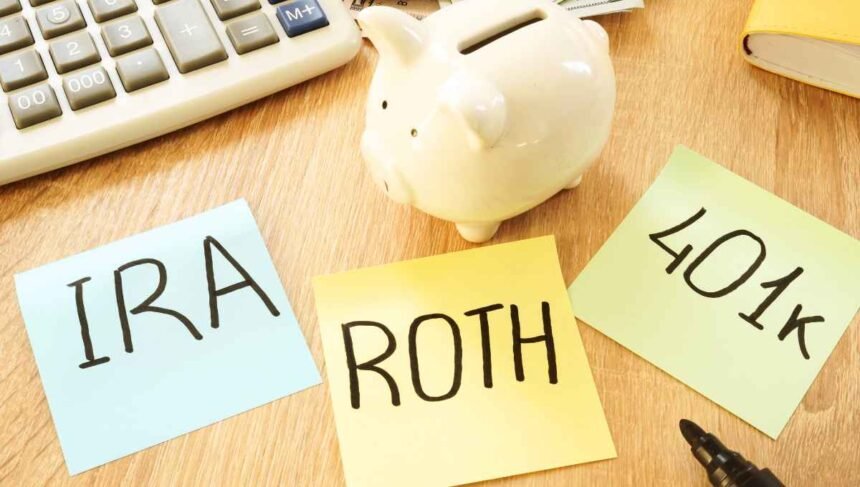A 401k is one of the most popular employer-sponsored retirement savings plans that American workers utilize. But if you’ve just entered the workforce or never had access to one before, you may find yourself wondering—what exactly is a 401k and how does it work?
This retirement account may sound complicated, but it provides tremendous tax advantages that can help your nest egg grow exponentially over time. Learning the ins and outs now will set you up for a comfortable future after you exit the workforce.
Here, we’ll explore what a 401k is, how you can contribute, the tax benefits, investment options, and most importantly—how to make the most of it.
What is a 401k?
A 401k is an employer-sponsored, tax-advantaged retirement savings account. It allows you to direct a portion of each paycheck into the account, investing it for growth over time so you have sufficient savings when you retire. Employers may also make matching contributions up to a percentage of your salary.
The 401k gets its name from section 401(k) in the Internal Revenue Tax Code, which allows employees to avoid income tax on money that is diverted into the retirement account. Any earnings that accrue in the account are also tax-deferred as long as they remain in the account.
Contributing to Your 401k
The IRS sets limits each year on how much employees can contribute tax-free to a 401k. For 2023, the contribution limit is $22,500 for those under age 50. If you are age 50 or older, you qualify for “catch-up” contributions up to $7,500 more per year.
Most employers automatically deduct your contribution as a percentage of each paycheck. So you simply need to decide what percentage works for your budget–most experts recommend 10-15% as a goal. Some plans allow you to contribute each pay period or in a lump sum with your tax refund for instance.
Many employers also match employee contributions up to 3-6% of your salary. So if your company matches 6% and you earn $60,000 per year, by contributing $3,600 to your 401k, you could receive another $3,600 from your employer for retirement savings. This free money makes it well worth maxing out the match if possible.
Investing & Managing Your 401k
Once you start contributing to your 401k, you’ll need to choose how that money is invested. Most 401ks provide a menu of mutual funds, index funds, target date funds, stable value options like money market funds, and company stock. Riskier stock funds have higher earning potential, while bond funds and money market funds provide stability but less growth.
Target date funds automatically adjust their stock and bond allocation over time, becoming more conservative as the target retirement year approaches. If you don’t want to actively manage your investments, target date funds take the guesswork out by handling it for you based on time horizon.
Ideally with any investments you choose, you’ll want to consider your risk tolerance and time horizon until retirement. Over long periods, equity heavy portfolios tend to realize the best returns.
401k Administration Fees
In addition to expense ratios charged by the mutual funds in your account, 401k plans charge their own administration fees ranging from 0.5-1% or more per year.
While fees vary greatly, they do add up over time and eat into your returns, so having low cost index funds and ETFs within your plan helps maximize gains. Checking your plan’s current fee structure can give you an idea of total costs.
Withdrawing Money from Your 401k
While 401ks help set aside money for retirement, they aren’t piggy banks to dip into lightly. The IRS applies strict rules on withdrawals to avoid penalizing you heavily on taxes and depleting future retirement income.
Generally, you cannot withdraw money from your 401k until age 59 1⁄2 without facing a 10% early withdrawal penalty from the IRS in addition to being taxed at your income tax rate on withdrawals.
However, certain exceptions allow you to access the funds early without penalty – things like disability, terminal illness, or purchasing your first home in some cases.
At age 72, you must begin taking Required Minimum Distributions based on life expectancy to avoid penalties. So while the funds are ideally reserved for retirement, you can access them early if absolutely necessary by paying Uncle Sam.
Rollover Options with 401ks
If you leave an employer before retiring, you have a few options to avoid taxes or penalties:
- Leave the balance in your former employer’s 401k plan if allowed
- Rollover the balance into your new employer’s 401k plan if available
- Rollover funds into an IRA account to maintain the tax benefits
No matter if you switch jobs or retire, you don’t have to let 401k balances stagnate or get stuck paying avoidable taxes. Carefully moving funds into another tax-advantaged growth account prevents the IRS from nibbling away at your nest egg unnecessarily.
The Power of Tax-Deferred Growth
The key benefit of 401ks comes down to harnessing the extraordinary power of compounding tax-deferred retirement savings over long periods.
By contributing regularly and investing prudently with an eye on the long term, even modest monthly contributions can snowball into a sizable sum.
Let’s look at a basic example:
- Amy, 25, makes $45K per year
- She contributes 10% of her salary ($375/month) into a 401k plan
- Her employer matches 6% ($270/month)
- She averages a 7% annual return on her investments
By age 65, Amy would have contributed $375K over 40 years, her employer matches added another $216K, and cumulative investment earnings reach nearly $1.2 million.
That brings her 401k balance at retirement to over $1.8 million by allowing consistent contributions to compound for decades in a tax-deferred account, even at a conservative growth estimate. Amy contributed less than $40K some years, but still retires with serious savings simply by harnessing the power of her 401k early on.
Maximizing Your 401k Balance at Retirement
While most Americans tap Social Security benefits in retirement, they often don’t provide enough income by themselves for a comfortable lifestyle. Having supplemental income from 401k savings and other sources makes retirement more secure and flexible.
Here are a few key steps to maximize 401k balance for retirement:
- Open a 401k as early as possible and contribute consistently over time
- Contribute enough to receive full employer match when available
- Try to increase contribution rate 1% per year toward 15% goal
- Take advantage of catch-up contributions at 50 if able
- Learn basics of investing—risk vs. returns
- Use tax savings to invest more rather than increasing lifestyle
- Avoid borrowing or withdrawing funds early
- Roll over balances when changing jobs, don’t cash out
- Discuss options with a fee-only financial planner if unsure
The sooner you start saving, the more growth compounding and deferred taxes can go to work for you over time. Making small, gradual increases while avoiding leaks from loans or withdrawals ensures you maximize what ends up in your pocket decades later.
Conclusion
While 401ks seem complicated at first glance, they provide tremendous financial advantages that can help you retire comfortably without needing to win the lottery or become an entrepreneurial rock star overnight.
Learning the basics now and harnessing time and tax deferrals will pay off in the long run—literally.
So enroll as early as possible, contribute consistently while increasing gradually over time, take advantage of employer matches, and educate yourself on investing basics.
Retirement may feel distant, but by starting now you ensure your future freedom to enjoy life’s simple pleasures rather than just working until they carry you out the door. Give your 401k the attention it deserves today!





